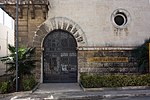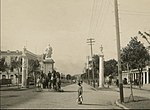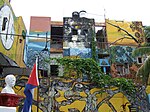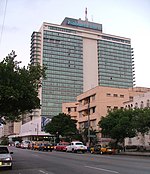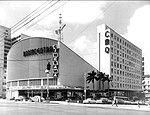Quinta de los molinos

The Quinta de Los Molinos [1] is more than two centuries old and a national monument, an oasis in the heart of the city located at the intersection of one of Havana’s heaviest traffic arteries: Infanta, Carlos III, and Boyeros avenues. The Quinta since colonial times has had a complicated history to various events and characters, mainly with General Máximo Gómez. The original area exceeded the territory it currently occupies as it extended north to approximately the location of the University of Havana, to the northwest to Hospital Calixto García, and west to G Street, including the Castillo del Principe, and south to Salvador Allende avenue and east to Infanta street.[2]It is in the general vicinity of the Paseo de Tacón (Avenida Carlos III), the University of Havana, and the Castillo del Principe.[3]
Excerpt from the Wikipedia article Quinta de los molinos (License: CC BY-SA 3.0, Authors, Images).Quinta de los molinos
Avenida Salvador Allende (Carlos III),
Geographical coordinates (GPS) Address Nearby Places Show on map
Geographical coordinates (GPS)
| Latitude | Longitude |
|---|---|
| N 23.131611111111 ° | E -82.380111111111 ° |
Address
Hogar de Tránsito
Avenida Salvador Allende (Carlos III)
10300 (Príncipe)
Havana, Cuba
Open on Google Maps



